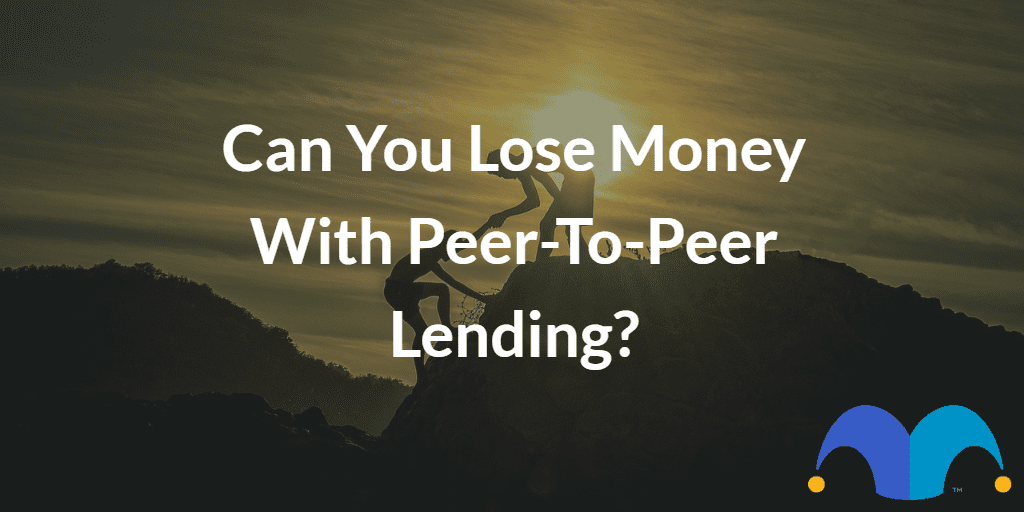Peer-to-peer lending is a relatively new way to invest your wealth. It involves lending your money to either individuals or businesses, with the expectation of earning a decent return on your cash.
But is it safe? And is there a chance you can lose your money? Let’s find out.
How does peer-to-peer lending work?
Peer-to-peer lending platforms allow you to lend your money to individual borrowers or businesses. The idea is that the borrower pays back the loan over a set period of time. In return, you should earn a decent rate of interest.
It’s worth knowing that your money won’t be matched 1:1 to individual borrowers. Instead, your money will be piled in with that of hundreds, or thousands, or other lenders. This means you won’t be depending on a single borrower to pay back their loan on time.
Alternatively, you can lend to organisations instead. Do this and your money may be used to help fund new ventures. You can even choose to invest specifically in property.
With peer-to-peer lending, all borrowers are credit checked and rated for risk. If borrowers fail to repay their loan, then the peer-to-peer lending platform will chase repayments for you.
Can you lose money with peer-to-peer lending?
In short, yes, you can. While platforms may make their products look like savings accounts, they are anything but.
Remember, with peer-to-peer lending you are effectively allowing borrowers to use your money. These borrowers may or may not pay back their loans.
While losses from loan defaults are shared across lenders, which mitigates the risk of losing large chunks of your money, it’s important to recognise that returns aren’t guaranteed. To hedge against bad loans, many lenders have third-party insurance to cover losses.
Another risk to consider with peer-to-peer lending is that you don’t get the £85,000 FSCS protection that you would if you decided to stick your cash in a normal savings account. So if a platform were to experience financial difficulties, you could lose your money.
While this is a genuine risk, it is worth knowing that when you lend your cash via peer-to-peer lending, the relationship is technically between you and the borrower. So if a platform were to go into liquidation, your money should be safe. However, as peer-to-peer lending is a relatively new concept, such a scenario is untested in the real world.
What else do you need to know?
Here are some general need-to-knows about peer-to-peer lending.
1. You can invest tax free
Everyone aged 18 or over in the UK can put up to £20,000 into an ISA each year. Anything you put into an ISA remains tax free, year after year.
With peer-to-peer lending, you can open an account within an ‘innovative finance ISA’, to shelter your returns from the taxman. If for any reason you don’t want to open an account within an ISA wrapper, then any interest you earn will be covered by the personal savings allowance instead.
2. You can’t invest more than 10% of your assets
The Financial Conduct Authority (FCA) has taken a keen interest in the industry over recent years, following concerns that investors could lose their money due to unknown risks.
To combat this, the FCA has stipulated that investors can’t put more than 10% of their investable assets into peer-to-peer lending platforms.
3. You may have to wait to access your cash
With peer-to-peer lending, you can’t immediately withdraw your money. If you want to access your cash, you have to ‘sell’ your loans, which could take time.
4. Interest rates aren’t guaranteed
While lending platforms often promote headline interest rates, the interest rate you receive isn’t confirmed until a loan is agreed. Plus, if you put money into a platform, you won’t necessarily earn interest from day one. That’s because you’ll have to wait until your money is loaned out.
Peer-to-peer lending risks: takeaway
If you choose to invest in peer-to-peer lending, understand that there are risks involved, and you can lose money. For this reason, only ever invest funds that you can afford to lose.
If you’re overly concerned about the risks, then putting your cash into a normal investing account may be a better option.
Please note that tax treatment depends on your individual circumstances and may be subject to change in the future. The content in this article is provided for information purposes only. It is not intended to be, neither does it constitute, any form of tax advice. Readers are responsible for carrying out their own due diligence and for obtaining professional advice before making any investment decisions.
